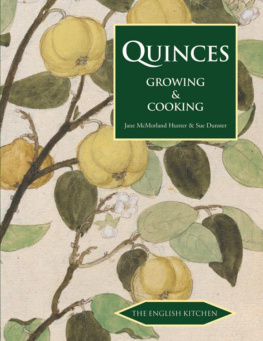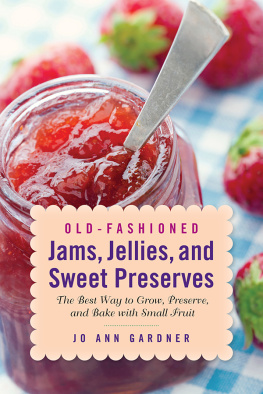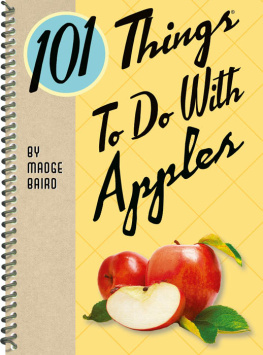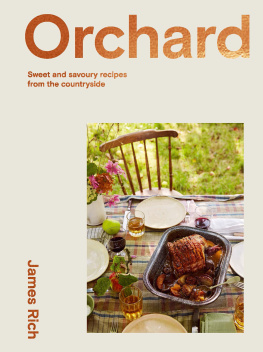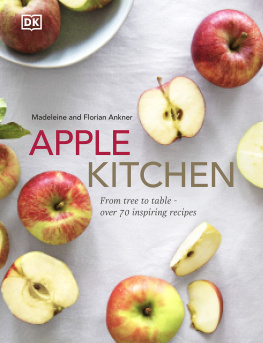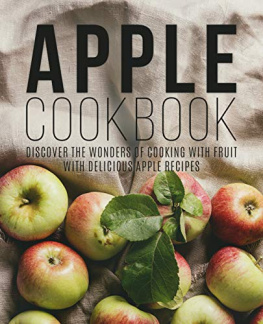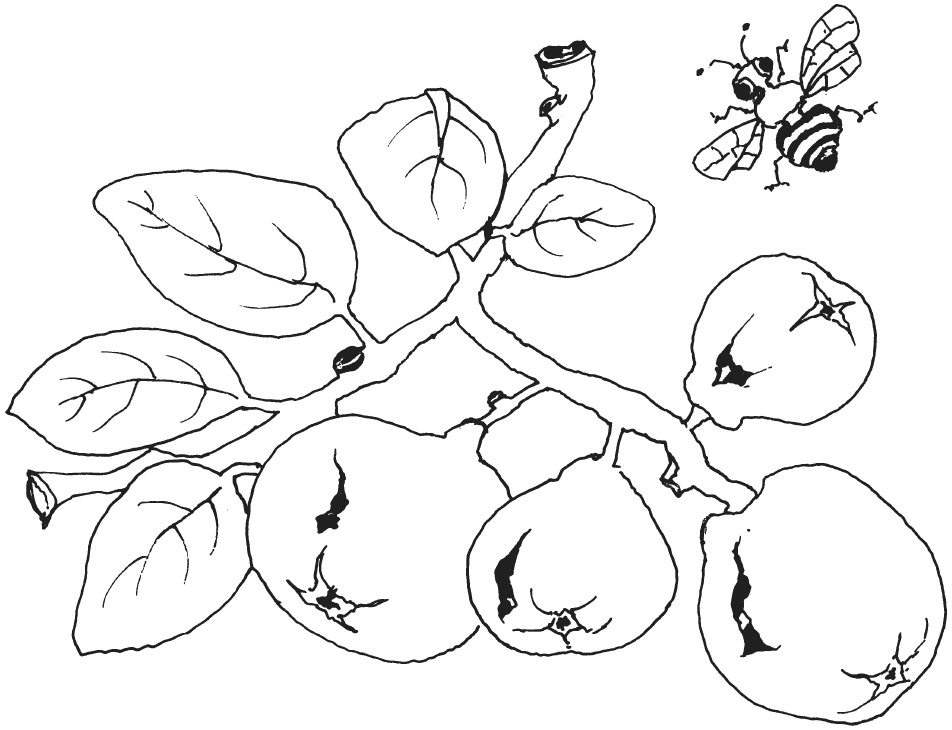O ut of season quinces are impossible to obtain and even in season they are usually only available at the more inspired farmers markets and a few selective shops. This seems a sorry state of affairs for a fruit which is delicious in both sweet and savoury dishes, can easily be preserved and will enhance a room with an unmistakable yet delicate fragrance.
The easy solution is to grow your own quinces and the purpose of this book is to encourage everyone to do exactly that. Quinces grow on attractive trees which never become unmanageably large and will improve any garden. They can even be grown in containers. In late spring the trees are covered with the most exquisite, fragrant blossom. This ranges from white to pale pink and is set against a backdrop of furry grey-green leaves. The blossom does not last long, but while it is in flower there is little that can rival it. The trees themselves grow in a twisty, slightly mad, but attractive manner, although some varieties can be trained against a wall in an espalier or fan. The fruit appears in late summer and ripens towards the end of autumn. In northern Europe the fruit never ripens sufficiently to be eaten raw, but is so delicious once cooked that this really does not matter. The trees are highly productive and fairly unfussy as to where they grow, in particular, the cultivar Meechs Prolific certainly lives up to its name. The trees self-pollinate which means you only need one to get fruit. They are largely disease-free, fruit reliably most years and will live to a great age, enhancing your garden and providing you with a scrumptious crop in return for little input.
Quinces were reputed to be the fruit which Paris gave Aphrodite and it was said that quince trees grew up wherever she walked. They may have been the infamous fruits on the Tree of Wisdom in the Garden of Eden. Much later Edward Lears Owl and Pussy-cat dined on them at their wedding feast. They originally came to Europe from central Asia where they still grow wild in the foothills of the Caucasus Mountains in Turkmenistan and Iran. They have been used in Persian cooking for over 2,500 years, but probably reached Britain in the thirteenth century where they appear in recipes for pies sweetened with honey.
Quinces are deliciously sweet and scented when cooked. They contain a high level of pectin and can therefore easily be made into jams and jellies. Originally marmalade was made from quinces coming from the Portuguese word for the fruit, marmelo. A little goes a long way and the addition of a few slices will transform sweet and savoury dishes. They combine particularly well with apples and pears, but will also go with almonds, oranges and even mulberries, if you can get them. They can be made into cakes, tarts, biscuits and custards. They are used in many Mediterranean and central Asian savoury dishes including chicken, pork and all types of game. They can be stuffed with meat and used to flavour savoury tarts. There is so much more to them than just the jelly and membrillo commonly found in delicatessens.
Even before you cook with them quinces can be used to scent a room. Once ripened, they are an attractive golden colour and will keep in a bowl giving off a delightful fragrance.
The first part of this book gives a brief history of quinces to put them into context in both the kitchen and the garden. A section on growing quince trees follows which gives all the information you need to select and care for a suitable cultivar. The final part covers storing, cooking and using the fruit, in both modern and historic recipes. Do not be put off by the fact that they usually need to be cooked, so do lots of other ingredients and the rewards for cooking quinces are enormous.
T he earliest known quinces grew wild in the foothills of the Caucasus Mountains between Persia and Turkmenistan. This seemingly inhospitable area is actually very fertile and many fruits thrived. A knobbly, irregular-shaped variety still grows wild in this area. The valleys below formed many of the ancient trade routes and quinces spread rapidly westwards and eastwards. To the west they were carried along the old trade routes, reaching the Middle East and then the Mediterranean as Golden Apples, flourishing as they went. To the east they were taken across the deserts of the Silk Road and thence to China where they arrived as the Golden Peaches of Samarkand.
They quickly became very popular and were credited with both mythical and medicinal powers. From ancient times right up to the late Middle Ages quinces were, in most places, more widely used and better known than apples. Related to both apples and pears, it is sometimes hard to identify quinces in classical literature, especially as the Greeks tended to use the term melon to refer to both apples and quinces, but it is likely that most golden apples mentioned were actually quinces as they would have been more widely cultivated and better known, particularly in the Levant and southern Europe. It is important to remember that the quinces of central Asia, the Middle East and south America can often be eaten straight from the tree. Quinces were also favoured because it is only comparatively recently that the people of the West have developed such a sweet tooth. Many other regions of the world still appreciate astringent flavours and historically these tastes would have been the norm as sweeteners other than honey were rare and expensive.
One of the quinces earliest possible claims to fame is the Judgement of Paris in Greek mythology. Eris is the Greek goddess of strife and in a foolish miscalculation she was the only god not invited to the wedding of Peleus and Thetis. Understandably furious, she barged into the wedding ceremony and threw down a fruit inscribed For the most beautiful. This fruit was described as a golden apple and was, almost certainly, a quince. Hera, Athene and Aphrodite each claimed the fruit, so Zeus decided that the matter should be settled by Paris. Hera offered him empire, Athene guaranteed military glory and Aphrodite promised him the most beautiful woman in the world. This was Helen, who was unfortunately already married to Menelaus of Sparta. Paris gave the fruit to Aphrodite and she in turn helped him win Helen, thereby sparking off the Trojan War. The main result of this episode for quinces is that ever after they have been regarded as Aphrodites fruit. They are associated with love and fertility and it was believed that the trees sprang up wherever she walked, alongside the better known flowers.
The quinces link with Aphrodite ensured it an unofficial place in wedding ceremonies. In 594 BC Solon was elected chief magistrate of Athens. He was a politician, but also a poet and although he is described by George Forrest in The Oxford History of the Classical World as being self-centred, self-righteous and just a trifle pompous he at least kept written records and concerned himself with more than simply amassing power. He tried to establish peace and democracy by writing a new law code and instituting social and political reforms. In due course he set down the format for wedding ceremonies and the quinces part was officially recorded. From then on quinces have been part of the Greek wedding ceremony and are often baked in a cake with honey and sesame seeds. This is said to symbolize the couples enduring commitment to each other through good times and bad. The fruits are often thrown to the bride and groom as they go to their new home and the bride is presented with a quince to ensure fertility. One myth says that pregnant women who indulge their appetites in generous quantities of quince will give birth to industrious and highly intelligent children. Edward Lear was following an ancient precedent when he included quinces in the Owl and the Pussy-cats wedding feast.

